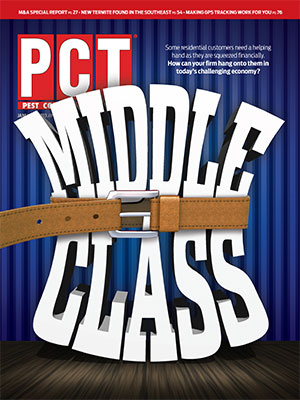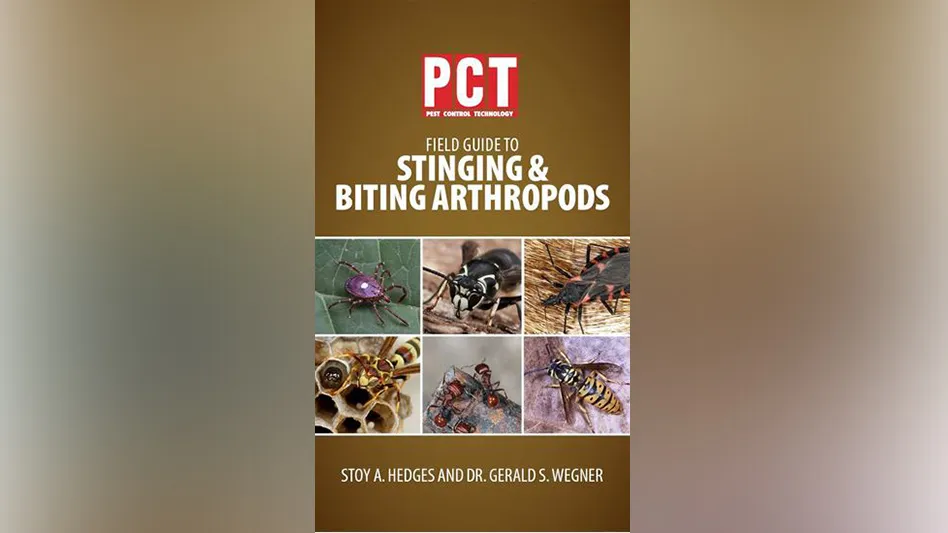 Why are we in business? To maximize the value our business — period! In so doing we create a great place to work, provide job security, create an environment where we provide great service for our customers and do business in a socially responsible manner (e.g., donating to charities or sponsoring local events). Most experts in our industry agree that maximizing the value of a pest control business entails creating a catalog of recurring services. This includes selling, for example, monthly and or quarterly pest control contracts. But how then do we know the value of our business and why do we need to know this unless we are selling or purchasing a business? All informed pest control operators should know the value of his or her company for the following reasons:
Why are we in business? To maximize the value our business — period! In so doing we create a great place to work, provide job security, create an environment where we provide great service for our customers and do business in a socially responsible manner (e.g., donating to charities or sponsoring local events). Most experts in our industry agree that maximizing the value of a pest control business entails creating a catalog of recurring services. This includes selling, for example, monthly and or quarterly pest control contracts. But how then do we know the value of our business and why do we need to know this unless we are selling or purchasing a business? All informed pest control operators should know the value of his or her company for the following reasons:
- Annual Business Check Ups to determine financial strengths and weaknesses internally and as compared to other companies;
- Retirement Planning;
- Disputing Conclusions of IRS audits;
- Estate Planning;
- Merger/Acquisition Planning – Selling the company or purchasing another
How Much? So how much is your company worth? Well that’s easy. The answer is you value your company as a multiple of revenues. But wait…not so fast! In fact, if you were to sell your company to one of the larger players in the industry they would perform some due diligence procedures and come up with a price that most of these players predicate on a percentage of revenues based on the outcome of the due diligence. If your objective is to sell your business, the answer is to call one of the players in the market who are making acquisitions and let them give you a value. It will be a percentage of annual revenues with certain adjustments.
However, if you need a valuation for estate planning, or you are purchasing another company, you may need financing. Most banks and the U.S. Small Business Administration (SBA) will loan at 75-80% loan to value of the asset being purchased. This means that you may qualify for a loan of up to 75-80% of the value of your business and/or the target you intend to purchase. In this case the value may have to be determined by having a valuation performed by a certified appraisal firm.
In almost all cases the approaches taken in these types of appraisals will result in a value that is less than what an industry insider would pay. This is due to the fact that the single largest asset (which in almost all cases is not represented on the balance sheet) is the customer list. The customer list is an intangible asset and is subject to several valuation approaches (see right).
The insiders in our industry usually are willing to pay 75-120% of annual recurring revenue based on the potential profitability of the recurring work. However, you may be in for a rude awakening if you have a professional appraisal performed by a bank’s appraiser. An intangible asset such as a customer list is only as good as the use that can be made of it. In the pest control industry, most in the acquisition game know how to maximize a purchased customer list, whereas a non-industry person may not see quite as much value. This may be the reason for the disparity between what the insiders will pay and those outside the industry who try to place values on pest control firms.
Valuing Intangibles. Most certified appraisers use the valuation framework spelled out in Internal Revenue Service Ruling 59-60. The purpose of this revenue ruling was to outline the approaches, methods and factors to be considered in valuing the stock of closely held corporations for income, estate and gift tax purposes and is the grand daddy of valuation methodology when it comes to valuing closely held companies. While there are eight broad factors to be considered in the ruling, these factors are used as guidelines only. As previously mentioned, the single largest asset in a pest management firm is the customer list, which is an intangible. The three most widely used valuation techniques for valuing intangibles are:
1. The Cost of Creation Technique – Using this technique the appraiser seeks to determine what another business would pay to recreate the customer list in today’s dollars. This method does not consider if the list would contribute to future profit, but rather only considers creation of the asset from scratch.
2. Capitalization of Income Method – Using this technique the appraiser tries to measure the future benefit in monetary terms the customer list will generate. This technique not only includes cash generated but also savings to the company as a result of owning the assets. These savings could be several. One of the more obvious savings is making the acquirer more efficient with his routing because he uses the stops purchased as “tuck ins.”
3. Discounted Cash Flow – This is the most popular method of valuing an intangible asset. Using this technique, the average life of various customer relationships is estimated. For example a commercial customer may have a longer average life than a residential account or vice versa. Once estimates of those relationship classes have been determined, average annual profit is estimated from each classification. With these two factors, annual profit and the time that annual profit is expected to last, a discount rate is applied. The discount rate won’t be the current interest rate, but rather it will reflect a risk premium (mostly risk of lower retention). In this manner the discount rate will usually be significantly higher than the rate at which a pest control operator can borrow. The higher the discount rate, the less the value assigned to the intangible asset (customer list).
From a bank’s perspective, hard assets are always more attractive than intangibles. A bank can securitize a piece of real estate, a piece of equipment or a vehicle. While they can file a lien on the intangible, the collateral is only as good as the customer list itself. In a default, a bank wants to foreclose and flip the property and be out. The last thing a bank wants is to try to sell a customer list or operate a company. A firm that is running into financial trouble is probably having issues maintaining the value of the list (e.g., customer issues). It’s for this reason that banks are not enamored with the service industry and, therefore, appraisals commissioned by them usually come back lower than an appraisal from an industry insider who is familiar with the industry.
We should remember that a higher value is desirable in a situation where we are selling our own company in order to maximize wealth. In a purchase situation, the appraisal needs to be close to the purchase price if you are seeking outside financing. In other words the bank won’t lend you money to over pay for an acquisition. On the flip side, there are several reasons that a higher valuation is not desirable, such as gift and estate planning as well as marital dissolutions. In these cases the PCO may not be rooting for a high value but rather a lower valuation. In all cases the prudent PCO should work with a competent attorney and CPA to meet their objectives be it purchase, sale, succession planning or just staying informed.
The author is a CPA in New Jersey and owns an accounting firm that caters to PCOs throughout the United States. Visit www.pcobookkeepers.com for information about his firm, PCO Bookkeepers. He can be reached at dan@pcobookkeepers.com.

Explore the January 2013 Issue
Check out more from this issue and find you next story to read.
Latest from Pest Control Technology
- Viking Pest Control Organizes a Charity Bike Build for Local Families
- Gaining Control of Structure-Infesting Carpenter Ants
- Big Blue Bug’s Brian Goldman Receives Rhode Island Small Business Person of the Year Award
- UF Researchers Examine How Much Bait it Takes to Eliminate a Subterranean Termite Colony
- Women in Pest Control Group Continues to Grow, Provide Opportunities in the Industry
- NPMA Announces Results of 2024-2025 Board of Directors Election
- Massey Services Acquires Orange Environmental Services
- Hawx Pest Control Wins Bronze Stevie Award for Sustainability





